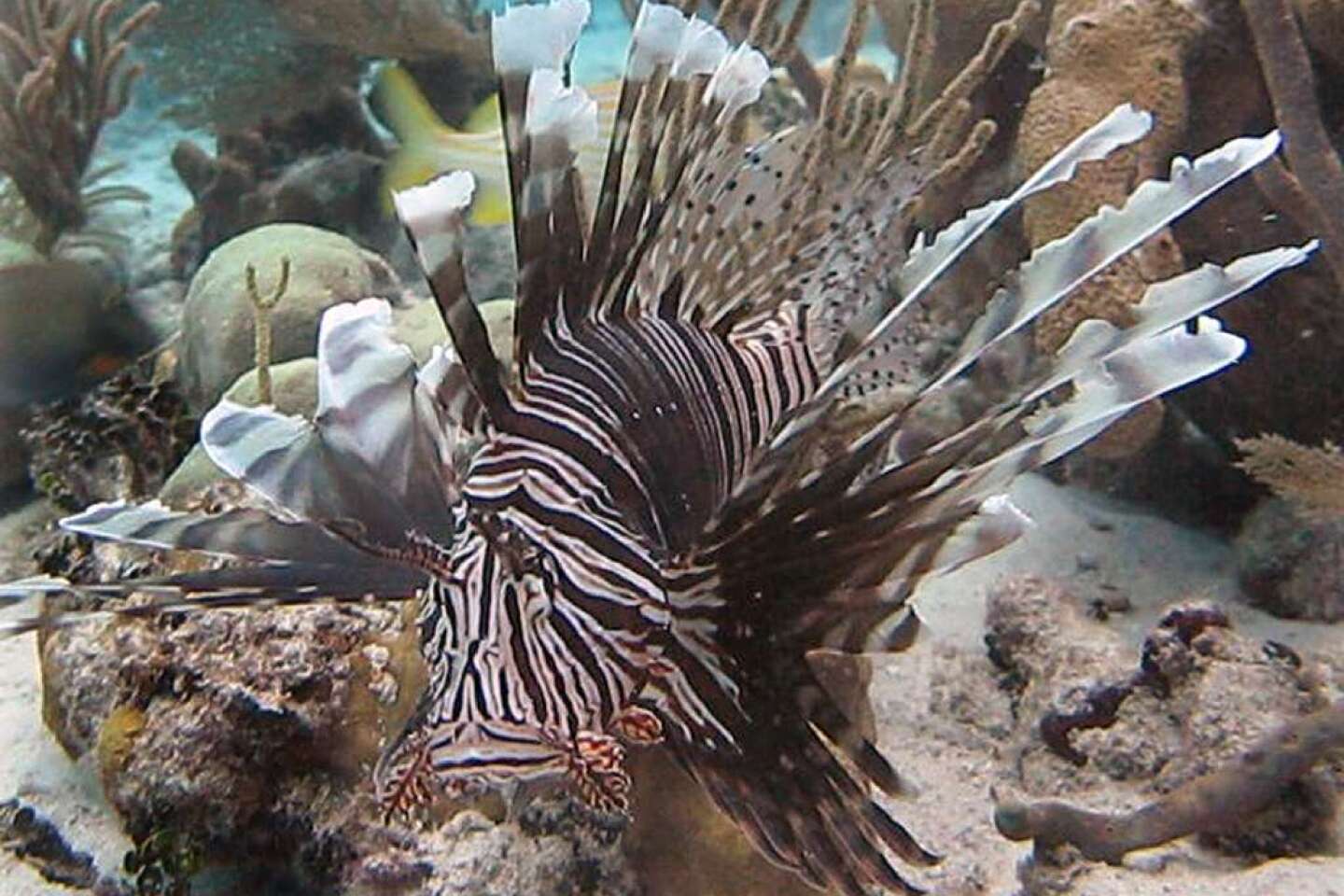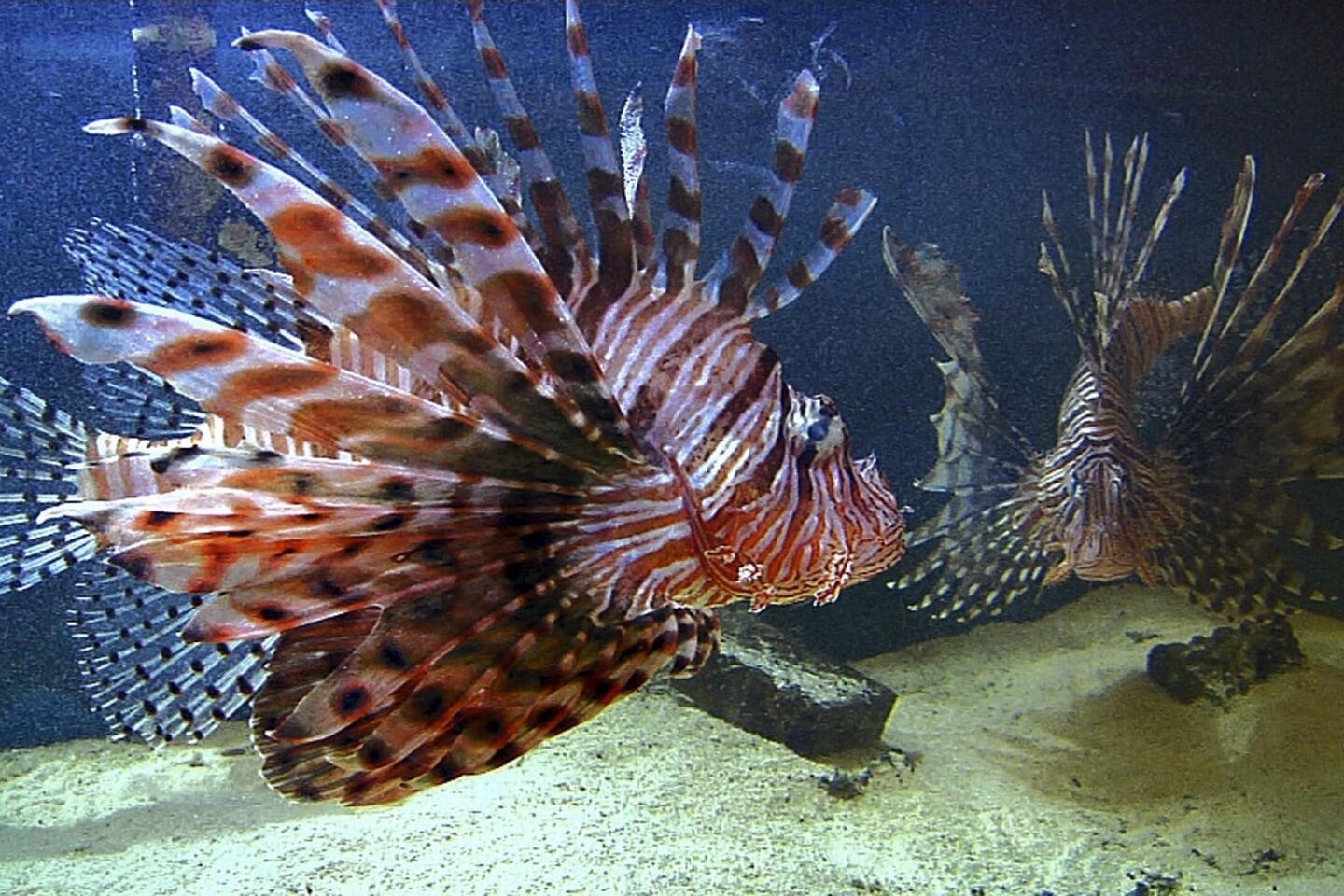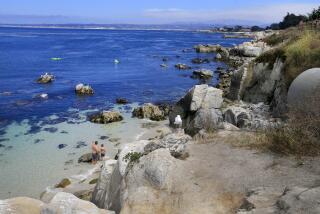Attack of the lionfish: Can they be stopped?
They are gaudy. They are hungry. And they are invading coral reefs and devouring native fish throughout the Caribbean. They are lionfish, and they are multiplying like crazy.
Until recently, the battle to save the Carribean’s coral reefs from a lionfish explosion seemed hopeless. Lionfish grow quickly and spawn as much as once every three to four days. They are “gape-limited,” which means they feast on whatever fits in their mouth, and there is a painful venom in their spikes. At least in the Atlantic, they appear to have no natural predators.
The only way to kill them is to don a scuba suit, jump in the water, and either spear them or catch them with a hand net.
Eradication seems impossible, but a new study published in the journal Ecological Applications finds that you don’t have to remove every last lionfish from a reef in order for native fish populations to return -- you just have to remove most of them.
“We know the reef can handle a few lionfish before bad things happen,” said Stephanie Green, a marine ecologist at Oregon State University and the lead author of the study.
Using computer models, as well as data collected from 24 coral reefs near Eleuthera Island in the Bahamas, the research team found that if 75% to 95% of the lionfish on a single reef were removed, the native fish would increase 50% to 70% within 18 months.
Yes, that’s still a lot of lionfish that need to be removed, but Green said divers often spend 30% of their time trying to catch the last few fish.
“The first 75% [of the] fish are easier to catch,” she said. “After that it is diminishing returns, and you spend a huge amount of time getting those last few individuals. That time is better spent moving to a new site and starting over.”
Green hopes that conservationists, fishermen and divers will band together to create a few pockets of almost-lionfish-free zones where native reef dwellers such as parrot fish, grouper and snapper can be replenished.
Lionfish were first spotted in the Atlantic in the late 1980s off South Florida, probably brought there accidentally by the aquarium trade. (Lionfish are popular aquarium fish, but cannot be bred in captivity.)
For more than a decade sightings of the fish in the Atlantic were rare and confined to a small area of the Florida coast. But in 2000, they started to show up along the Eastern seaboard, and in Bermuda. By 2004 they started to infiltrate the Bahamas. And last year they spread to the Gulf of Mexico and the south Caribbean, Green said. (You’ll find an animated map of how the lionfish has spread in the Atlantic here.)
The lionfish’s native range extends from the eastern coast of Africa all the way to Australia, where an unknown force keeps their numbers in check.
“We don’t know why they aren’t a problem there,” Green said. “It could be something there eats them as juveniles or eats their eggs, or that they are not as effective predators.
“Whatever it is, we certainly don’t have it here,” she said. “These things spread like wildfire.”
Lionfish may be beautiful, but they are a bit too bountiful. Follow on Twitter for more like this.









